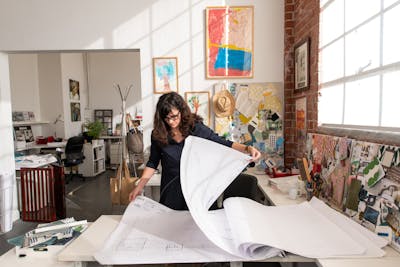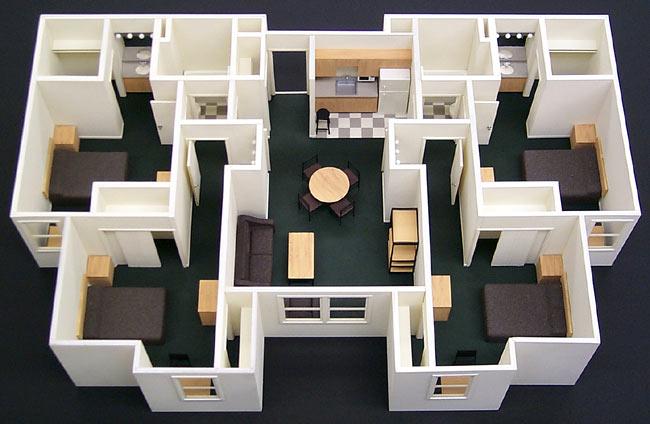The Art of Balance: Exactly How Interior Design and Home Architect Collaborate for Stunning Results
In the world of home style, striking a balance between looks and capability is no tiny feat. This delicate stability is achieved through the unified cooperation between interior designers and designers, each bringing their special knowledge to the table. The result? Areas that are not just aesthetically magnificent but additionally exceptionally comfortable. This ideal mix is not constantly simple to achieve. Stick with us as we explore the ins and outs of this joint process and its transformative influence on home layout.
Understanding the Core Distinctions In Between Inside Design and Home Style
While both Interior Design and home design play important roles in creating aesthetically pleasing and practical areas, they are inherently various techniques. Home design mainly concentrates on the architectural elements of the home, such as developing codes, safety guidelines, and the physical construction of the space. It handles the 'bones' of the structure, collaborating with spatial measurements, bearing walls, and roofing system designs. On the various other hand, Interior Design is extra concerned with improving the sensory and aesthetic experience within that structure. It entails picking and arranging furniture, picking color pattern, and incorporating attractive elements. While they function in tandem, their duties, obligations, and areas of competence diverge substantially in the creation of an unified home atmosphere.
The Synergy Between Home Architecture and Interior Decoration
The synergy in between home style and Interior Design hinges on a common vision of layout and the improvement of useful visual appeals. When these two areas align sympathetically, they can transform a living area from common to phenomenal. This partnership requires a deeper understanding of each technique's concepts and the ability to produce a natural, cosmetically pleasing setting.
Unifying Style Vision
Linking the vision for home design and indoor style can produce an unified living space that is both useful and cosmetically pleasing. It advertises a collaborating method where building components enhance indoor style elements and vice versa. Therefore, unifying the layout vision is essential in blending style and interior style for sensational outcomes.
Enhancing Practical Aesthetics
Exactly how does the harmony between home design and Interior Design boost useful looks? This synergy makes it possible for the development of areas that are not just visually appealing but likewise easily functional. Designers prepared with their architectural layout, making certain that the area is effective and functional. The indoor developer then complements this with carefully chosen components that boost the aesthetic appeals without jeopardizing the functionality. This unified cooperation can result in homes that are both liveable and gorgeous. A designer may make a residence with high ceilings and big windows. The indoor designer can after that emphasize these functions with tall plants and large drapes, respectively, therefore boosting the aesthetic charm while keeping the functional advantages of natural light and spaciousness.
Significance of Cooperation in Creating Balanced Spaces
The cooperation between indoor developers and architects is crucial in producing balanced spaces. It brings consistency between design and design, offering birth to areas that view it now are not only cosmetically pleasing yet also useful. Checking out successful collaborative approaches can provide understandings into just how this synergy can be properly accomplished.
Harmonizing Design and Architecture
Balance, an essential aspect of both Interior Design and architecture, can just absolutely be accomplished when these two areas work in consistency. This harmony is not just an aesthetic factor to consider; it influences the capability, toughness, and inevitably, the livability of a space. Inside developers and designers need to recognize each other's roles, value their proficiency, and connect effectively. They have to consider the interaction of structural aspects with style, the circulation of areas, and the effect of light and color. This collective process leads to a cohesive, well balanced layout where every component contributes and has a function to the general visual. Harmonizing style and architecture is not simply regarding developing attractive areas, but next concerning crafting areas that work effortlessly for their occupants.
Successful Joint Approaches

Case Studies: Successful Combination of Layout and Style
Checking out several study, it ends up being apparent how the successful integration of Interior Design and style can transform a space. The Glass House in Connecticut, renowned for its minimalistic sophistication, have a peek at these guys is one such instance. Architect Philip Johnson and interior designer Mies van der Rohe worked together to create an unified equilibrium between the interior and the structure, causing a seamless flow from the outside landscape to the inner living quarters. An additional exemplar is the Fallingwater Home in Pennsylvania. Engineer Frank Lloyd Wright and interior developer Edgar Kaufmann Jr.'s collective initiatives lead to an amazingly one-of-a-kind house that mixes with its all-natural environments. These instance research studies highlight the extensive effect of a successful design and design collaboration.

Getting Rid Of Obstacles in Design and Style Partnership
Regardless of the indisputable advantages of an effective collaboration in between Interior Design and style, it is not without its difficulties. Communication problems can occur, as both parties may make use of different terms, understandings, and techniques in their work. This can lead to misunderstandings and hold-ups in task completion. One more significant difficulty is the harmonizing act of visual appeals and capability. Engineers may prioritize architectural honesty and safety and security, while developers focus on convenience and style. The assimilation of these goals can be complex. Furthermore, budget and timeline constraints frequently add stress, possibly causing rifts in the collaboration. Efficient interaction, shared understanding, and compromise are vital to get rid of these difficulties and accomplish a successful and harmonious collaboration.

Future Patterns: The Evolving Partnership Between Home Architects and Interior Designers
As the world of home style proceeds to progress, so does the connection between designers and interior developers. Alternatively, indoor designers are accepting technological facets, influencing general layout and capability. The future promises an extra cohesive, ingenious, and adaptive approach to home style, as architects and developers continue to blur the lines, fostering a connection that genuinely symbolizes the art of equilibrium.
Final thought
The art of balance in home style is attained via the harmonious collaboration in between indoor designers and engineers. Regardless of challenges, this collaboration promotes development and innovation in design.
While both interior design and home style play essential functions in developing visually pleasing and useful rooms, they are inherently different disciplines.The harmony between home design and interior style exists in a common vision of style and the improvement of functional aesthetics.Unifying the vision for home architecture and interior style can produce an unified living room that is both practical and visually pleasing. Therefore, unifying the style vision is vital in mixing design and indoor style for spectacular outcomes.
How does the synergy between home design and indoor style boost practical aesthetic appeals? (Winchester architect)